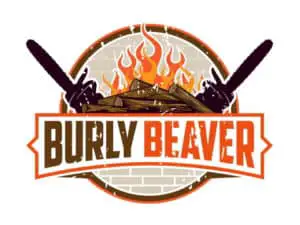
Building a fire and not sure where to start? There are so many different approaches you can use to start a fire, but it can be tough to know which approach works best for a given situation.
In this post, we’re going to walk-through the lean-to method for building a fire, which is one of the easiest (and most effective) approaches. If you want to follow along with the steps, watch our video tutorial here:
Let’s start by covering when you should use a lean-to fire structure over other methods, and then we’ll get into the steps!
When to Use a Lean-To Fire
The lean-to fire works well in a variety of situations, and it’s my personal favorite for starting outdoor campfires. and it works particularly well for the following:
1. To Start a Fire in Windy Conditions
The Lean-to fire lay is THE best type of structure to use when you’re trying to start a new fire outside on a windy day.
The reason for this is that the large piece of fuelwood that is used as a base, can act as a windshield while you’re getting your initial flames going.
2. For Beginners to Learn Fire-Building
This is one of the easiest methods of fire building to learn (along with the classic teepee), and it was my go-to approach way back when I first learned in Boy Scouts.
3. When you Have a Big Log to Burn
If you are starting off with a big monster log, and one of your main goals is to burn that log, then you can use it as the base for a lean-to fire.
You can also use the lean-to approach in fireplaces, wood stoves, and many other outdoor situations. You can even convert a lean-to fire to a log cabin fire by strategically adding logs. The lean-to is a versatile approach.
Next, let’s dive into the steps you’ll need to burn your own lean-to fire.
8 Steps to Build a Lean-To Fire
1. Find a Safe Area to Build the Fire
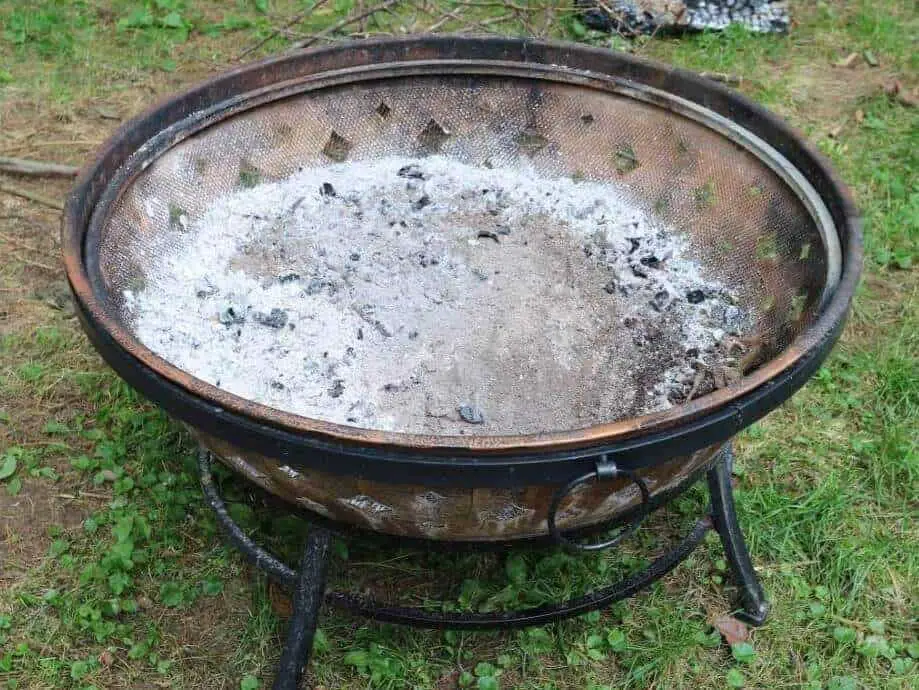
Here we’ll be using a fire pit. You could also use a fire circle, fire place, wood stove, etc. The important thing is to make sure that you are not creating any fire hazards.
If you don’t have any established fire areas, you can also build a fire circle. There are several ways to do this, but make sure flames will be contained. For example, you could dig out a dirt hole and line the outside with rocks.
2. Gather Materials
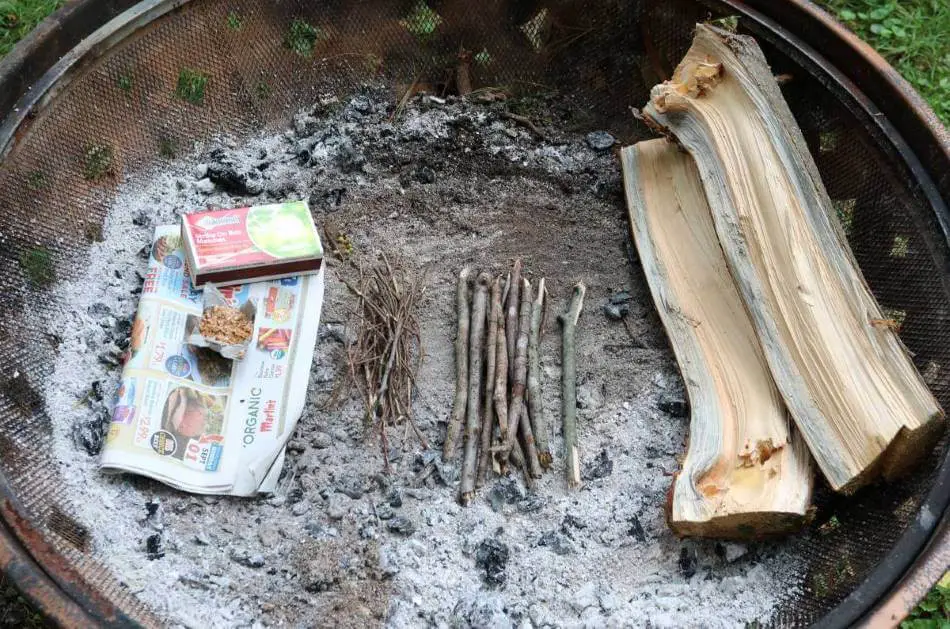
Specifically, you’re going to need the type of materials shown in the photo above, from left to right these are as follows:
- Matches (or a lighter, flint/steel, etc.)
- Paper or a fire starter of some kind
- Tinder
- Kindling
- Firewood
Technically speaking, you could also call fire starters and paper “tinder”, but it was more clear to list them separately above. Just wanted to give you a heads-up in case you run into any terminology snobs 🙂
3. Add Paper or Fire Starter Under Base

If you’re using paper, rip it into small sheets and crumple it up. This helps in a couple of ways. It will allow you to make contact with the wood you’re about to add more easily.
Crumpling your paper also gives more opportunities for airflow through your fire as it gets started.
Then place the paper up against the base wood. If you’re outside and it’s a windy day, it’s a good idea to first position the log so that it blocks the wind, preventing it from putting your fire out in the beginning stages
4. Add Tinder

Next, add your tinder by leaning it against your base firewood and over your paper (or firestarter).
Sawdust and wood chips can also make great tinder. Some people will also use pine needles or leaves, but I don’t really like that method because both pine needles and leaves produce a TON of smoke.
5. Add Kindling
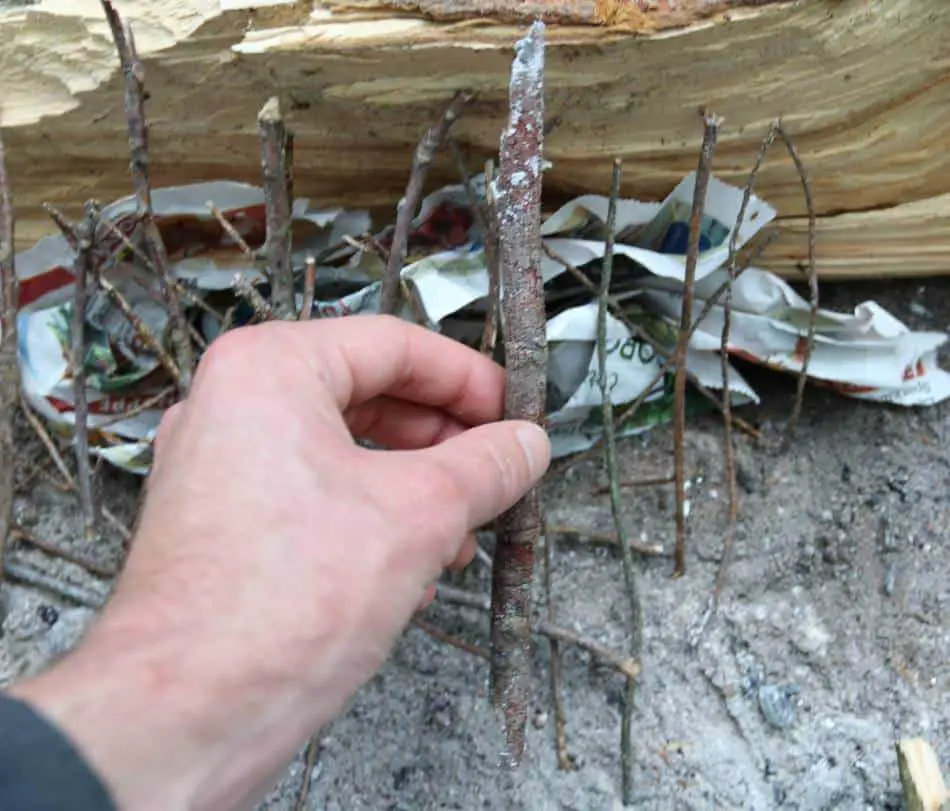
Once you have your first layer established with tinder, you’ll start stacking a layer of larger kindling over it.
Fires built with layers like this work really well, because smaller materials catch more quickly, and fire burns up. So this basically makes the fire structure a domino effect which lights larger and larger wood as it grows.
6. Admire Your Lean-To Fire Lay
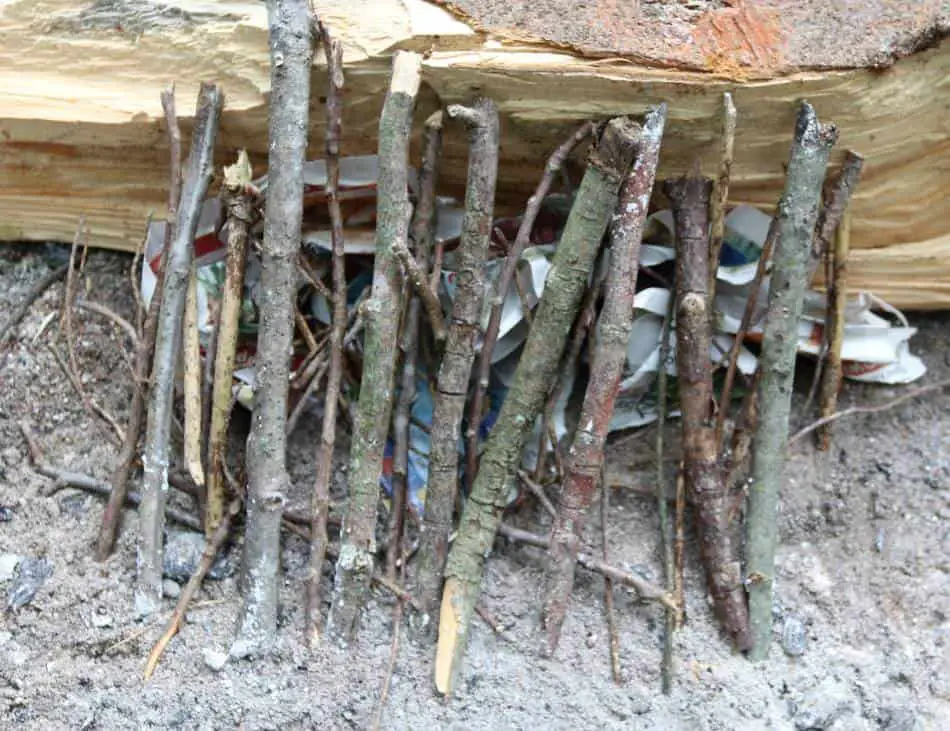
Now take a moment and admire the fruit of your labors. It might not look pretty, but the important thing is the quality of your structure.
If you’ve done a good job, you should be able to turn this into a roaring fire with just one match. Let’s see how in the next step!
7. Light Your Fire (One Match)
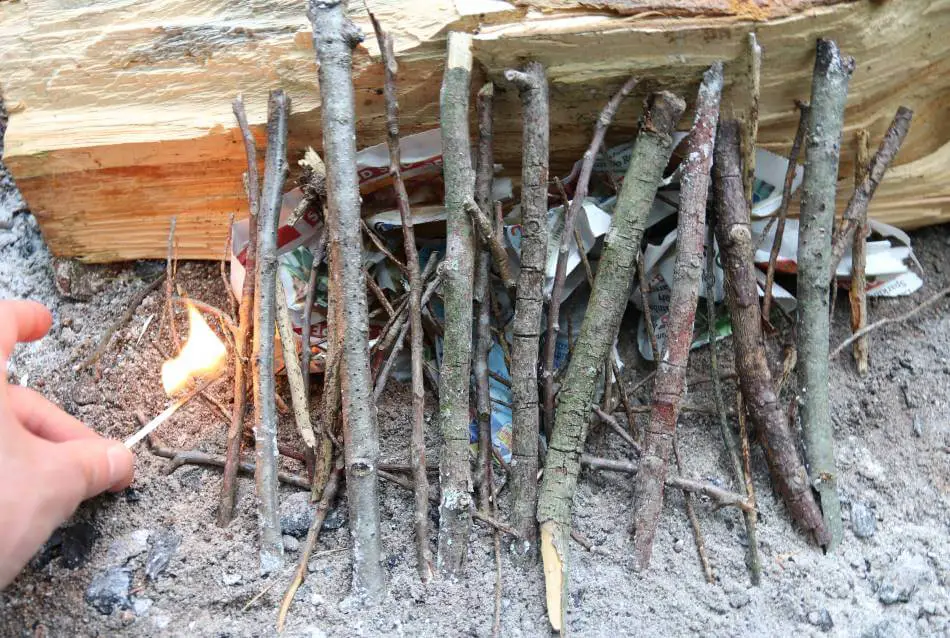
There actually is a bit of a technique to lighting a fire of any kind. You want to light the paper from the bottom (fire burns upward), and you want to light it in multiple locations to give your fire the best chances of survival.
Of course, you also want to be careful not to burn your fingers by holding onto the match for too long (don’t do dumb stuff).
The mark of a skilled fire-builder is the ability to start a fire with a single match, but were we able to do that for our lean-to fire?
Yep! But this is not my first rodeo. If it takes you a couple of tries, no worries, I bet you’ll get it next time 🙂
8. Enjoy the Glow!
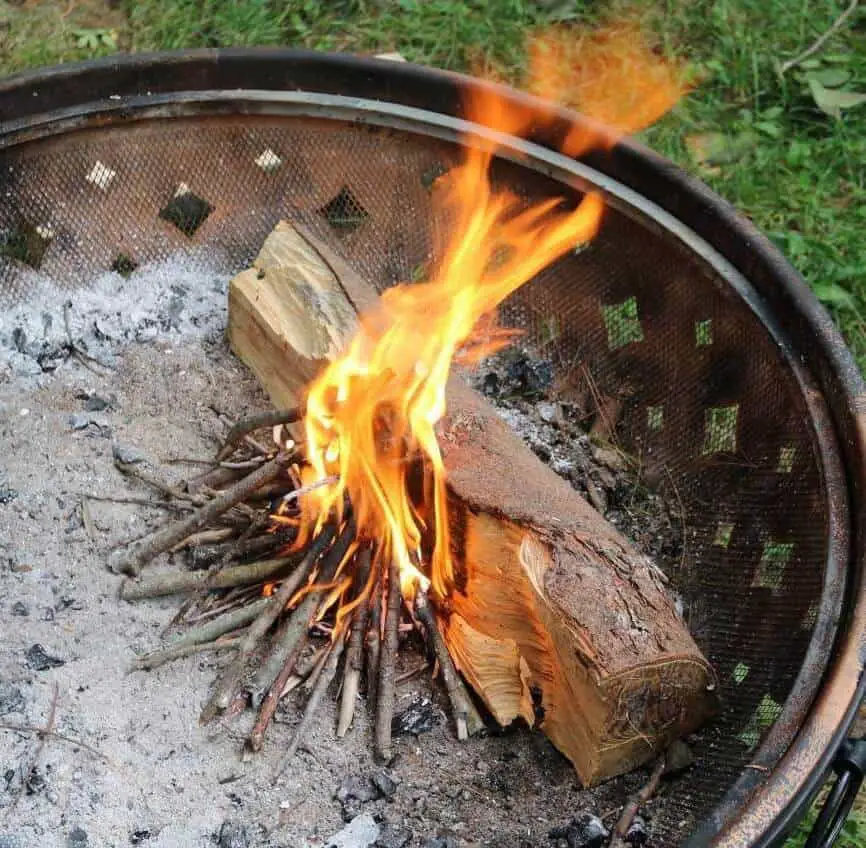
Ahhh – isn’t it purty? Nothing like the glow of a campfire and the satisfaction of knowing you built it yourself. Enjoy!
Related Questions
What is a Fire Lay?
A fire lay is the structure used to build a fire before igniting it. For example, some of the most popular types of fire lay are teepee, lean-to, and log cabin. The fire lay used will have a significant influence on the way a fire burns and how it can be used.
What is the Easiest Way to Start a Fire?
The easiest way to start a fire is by using the teepee fire lay. The teepee structure is the first method of fire starting learned by most beginners, and the airflow and orientation of the wood allow a flame at the bottom to naturally burn upward, making it easy to light and sustain.
